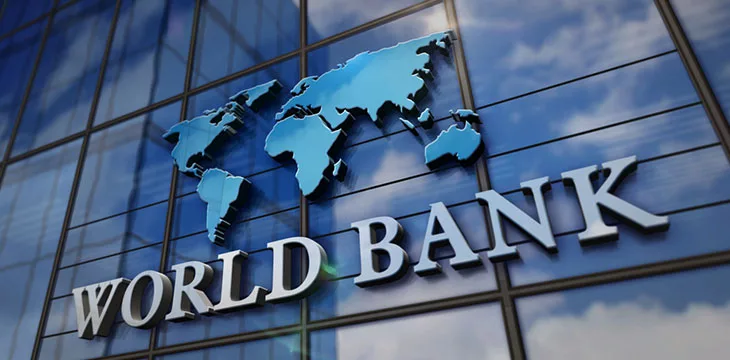Why Fintech will never be the same after 2023
As general manager of TripAction’s liquidMichael is obsessed with creating the world’s best corporate card-based expense management solution.
getty
How impatient are consumers today? Consider this: More than 1 in 5 reported abandoning a financial transaction or opening an account because it would take too long, according to American Banker.
That frustration has played a huge role in the development of fintech solutions for payment and banking, such as direct deposit and mobile billing. But as widespread as these conveniences have become, the fintech revolution is just getting started. Over the next 12 months, massive change will supercharge the fintech industry – creating a wealth of opportunities for businesses and individuals alike.
Speed along the toll highway
Analyzing where fintech is headed requires understanding where it came from. And 2008 was a pivotal moment. Since that recession, politicians have been keeping a close eye on the traditional economic ecosystem in an effort to make that society safer. Regulators pumped banks full of capital and leaned heavily into compliance. It worked – to an extent.
That’s because compliance came with a trade-off: the sole use of legacy systems, which simply couldn’t satisfy customers and businesses hungry for convenience and immediacy.
Enter fintech.
While PayPal had been streamlining the movement of money since 1998, the years after 2008 saw the birth of future giants, such as Venmo, Cash App and Zelle. New services like buy now pay later (BNPL) options and instant refunds took off. Not everyone was on board: Even today, banks and traditional payment networks such as Visa and Mastercard continue to garner the most trust from consumers. But fintech products like Apple Pay are helping to close the gap every year.
As solutions like these spread, usage skyrocketed. And by 2021, fintech reached “mass adoption,” according to a survey by The Harris Poll and financial services behemoth Plaid. It happened almost overnight: In 2020, 58% of US consumers surveyed used technology to manage their finances. But one year later, the figure had jumped to a staggering 88%. The “why” was obvious: Fintech, survey respondents said, saved them time and money, helped them make smarter financial decisions and reduced financial stress.
Fintech To Go
The industry is just heating up. Consumers are increasingly leaving their physical wallets at home, opting to shop with their phones instead. By 2022, 30% of consumers said they intended to use three or more digital wallets – up from 18% in 2021, according to McKinsey.
The increase is not born simply of convenience. Digital wallets and virtual cards also provide increased security against fraudsters, as virtual credit card numbers cannot be traced without access to the cardholder’s identity or computer system.
Mobile fintech technology is also changing how payments are connected globally. Fintechs that specialize in cross-border transactions extend the progress of domestic giants. Ripple, for example, uses blockchain technology to enable customers to move money across borders and currencies with near-instant settlement. The time of waiting days for an overseas bank transfer seems simply peculiar.
Many startups have of course taken note of all these developments. But it also has one of the world’s largest financial institutions – and it’s going to take fintech to a whole new level.
The brave new world ahead
Perhaps no year will be as big for fintech as 2023. That’s when the Federal Reserve is scheduled to launch its instant payments service, FedNow — the government’s first foray into real-time payments (RTP). It will enable individuals and businesses to send instant payments through the Fed’s depository institutions and give smaller banks and credit unions a fighting chance in the payments arena.
FedNow is a ground-breaking development – and not just because it will be the US’s first new payment rail since the Automated Clearing House (ACH) was launched in the 1970s. It could usher in a massive shift for future bank customers, who have overwhelmingly indicated – unsurprisingly – that access to faster payments will factor into any decision to switch banks.
What will that mean? From airline tickets to court fees, the FedNow payments highway gives banks the potential to stay up-to-date with current fintech offerings. And the White House says it will encourage all government agencies to use instant payment services for their transactions, such as the distribution of disaster funds or other government payments to consumers. Just think how many people could benefit from a more streamlined distribution of public benefits and greater access to lending programs.
While FedNow will be Washington’s first foray into fintech, it won’t be the last. In September, the White House revealed that two government departments will launch research into the next generation of cryptocurrency.
Public engagement in the growing fintech space is a huge opportunity for industry growth and collaboration. The market is still super ripe for companies and institutions to compete – or collaborate – with Uncle Sam and/or some of the big fintechs. And no single use case in the fintech industry has surpassed 70% penetration, according to Plaid.
From splitting restaurant bills to paying rent, fintech has pushed the old payment process to the brink of obsolescence. And as it continues to evolve, it may even make our impatience with financial transactions a relic as well.
The Forbes Finance Council is an invitation-only organization for executives in successful accounting, financial planning and wealth management firms. Am I eligible?


